第31章 TENDRIL-BEARERS(8)
When the Cobaea grows in the open air, the wind must aid the extremely flexible tendrils in seizing a support, for I found that a mere breath sufficed to cause the extreme branches to catch hold by their hooks of twigs, which they could not have reached by the revolving movement.It might have been thought that a tendril, thus hooked by the extremity of a single branch, could not have fairly grasped its support.But several times I watched cases like the following: tendril caught a thin stick by the hooks of one of its two extreme branches; though thus held by the tip, it still tried to revolve, bowing itself to all sides, and by this movement the other extreme branch soon caught the stick.The first branch then loosed itself, and, arranging its hooks, again caught hold.After a time, from the continued movement of the tendril, the hooks of a third branch caught hold.No other branches, as the tendril then stood, could possibly have touched the stick.But before long the upper part of the main stem began to contract into an open spire.It thus dragged the shoot which bore the tendril towards the stick; and as the tendril continually tried to revolve, a fourth branch was brought into contact.And lastly, from the spiral contraction travelling down both the main stem and the branches, all of them, one after another, were ultimately brought into contact with the stick.They then wound themselves round it and round one another, until the whole tendril was tied together in an inextricable knot.The tendrils, though at first quite flexible, after having clasped a support for a time, become more rigid and stronger than they were at first.Thus the plant is secured to its support in a perfect manner.
LEGUMINOSAE.--Pisum sativum.--The common pea was the subject of a valuable memoir by Dutrochet, who discovered that the internodes and tendrils revolve in ellipses.The ellipses are generally very narrow, but sometimes approach to circles.I several times observed that the longer axis slowly changed its direction, which is of importance, as the tendril thus sweeps a wider space.Owing to this change of direction, and likewise to the movement of the stem towards the light, the successive irregular ellipses generally form an irregular spire.I have thought it worth while to annex a tracing of the course pursued by the upper internode (the movement of the tendril being neglected) of a young plant from 8.40 A.M.to 9.15 P.M.
The course was traced on a hemispherical glass placed over the plant, and the dots with figures give the hours of observation; each dot being joined by a straight line.No doubt all the lines would have been curvilinear if the course had been observed at much shorter intervals.The extremity of the petiole, from which the young tendril arose, was two inches from the glass, so that if a pencil two inches in length could have been affixed to the petiole, it would have traced the annexed figure on the under side of the glass; but it must be remembered that the figure is reduced by one-half.
Neglecting the first great sweep towards the light from the figure 1to 2, the end of the petiole swept a space 4 inches across in one direction, and 3 inches in another.As a full-grown tendril is considerably above two inches in length, and as the tendril itself bends and revolves in harmony with the internode, a considerably wider space is swept than is here represented on a reduced scale.
Dutrochet observed the completion of an ellipse in 1 hr.20 m.; and Isaw one completed in 1 hr.30 m.The direction followed is variable, either with or against the sun.
Dutrochet asserts that the petioles of the leaves spontaneously revolve, as well as the young internodes and tendrils; but he does not say that he secured the internodes; when this was done, I could never detect any movement in the petiole, except to and from the light.
The tendrils, on the other hand, when the internodes and petioles are secured, describe irregular spires or regular ellipses, exactly like those made by the internodes.A young tendril, only 1.125 of an inch in length, revolved.Dutrochet has shown that when a plant is placed in a room, so that the light enters laterally, the internodes travel much quicker to the light than from it: on the other hand, he asserts that the tendril itself moves from the light towards the dark side of the room.With due deference to this great observer, I think he was mistaken, owing to his not having secured the internodes.Itook a young plant with highly sensitive tendrils, and tied the petiole so that the tendril alone could move; it completed a perfect ellipse in 1 hr.30 m.; I then turned the plant partly round, but this made no change in the direction of the succeeding ellipse.The next day I watched a plant similarly secured until the tendril (which was highly sensitive) made an ellipse in a line exactly to and from the light; the movement was so great that the tendril at the two ends of its elliptical course bent itself a little beneath the horizon, thus travelling more than 180 degrees; but the curvature was fully as great towards the light as towards the dark side of the room.Ibelieve Dutrochet was misled by not having secured the internodes, and by having observed a plant of which the internodes and tendrils no longer curved in harmony together, owing to inequality of age.
Dutrochet made no observations on the sensitiveness of the tendrils.